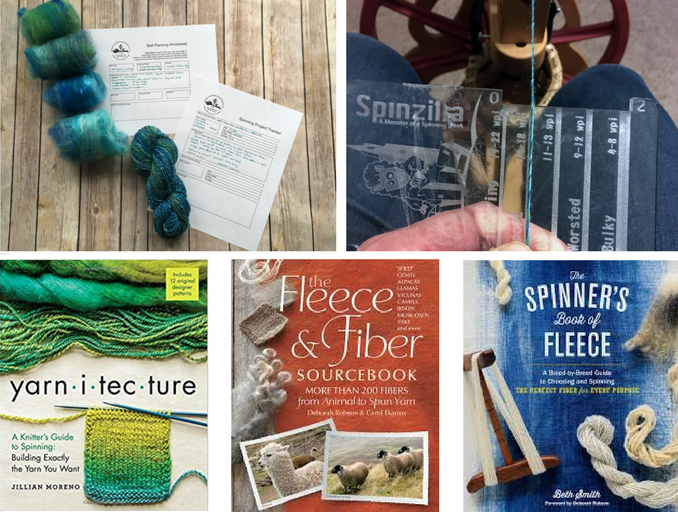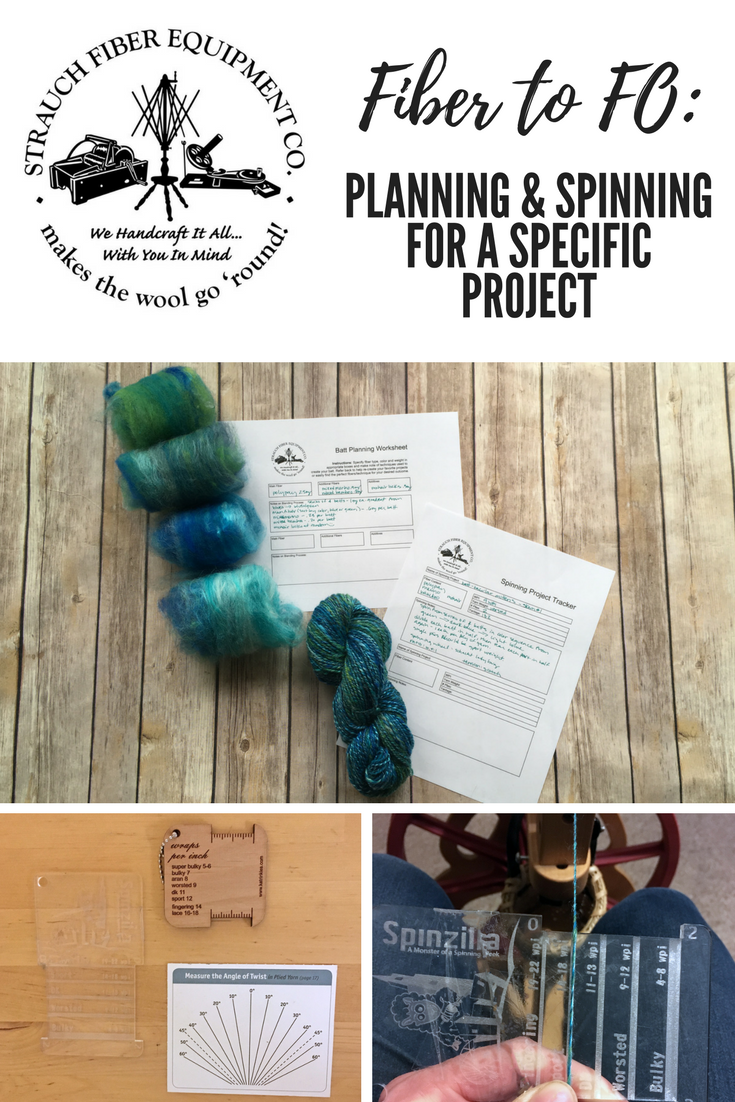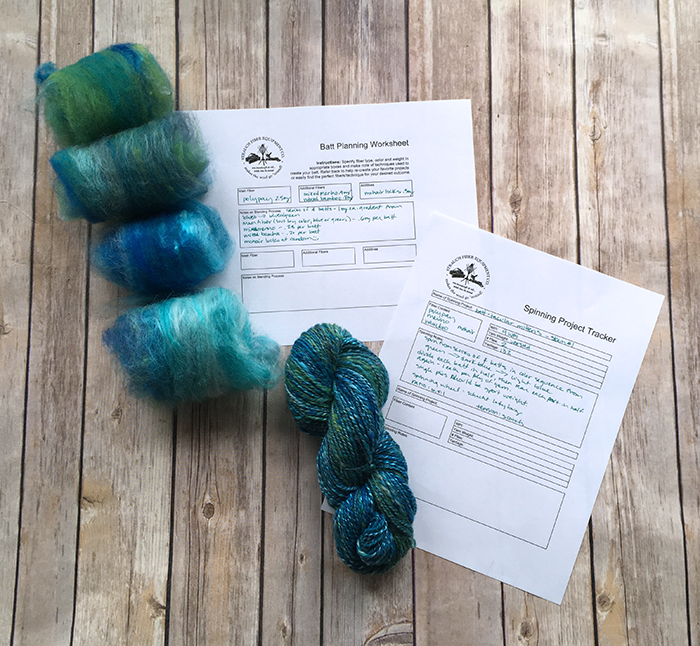Welcome back to the third installment of our Fiber to FO blog series. Previously, we talked about how to turn “forgotten” fibers lurking in your stash into beautiful, spin-worthy batts. Next, we covered some approaches for working with the resulting batts as well as how and why you should sample spin before starting your spinning project.
Today, we’ll dig a little deeper into the nuts and bolts of planning and spinning for a specific project – large or small – so that you don’t have to worry about running out of fiber or yarn along the way.
Just a Little Bit of Math Before You Spin
If you have a specific project in mind, you’ll want to make note of the yarn requirements to ensure that you spin a suitable yarn for substituting. To make your calculations, you will need to know 3 things about the called-for yarn in the project:
- The total yardage required.
- WPI (Wraps per Inch, a measurement which pertains to yarn weight).
- The size of the yarn (communicated as YPP, or Yards Per Pound).
PRO TIP: We’ve seen a few variations in numbers regarding YPP, but our friends at the Woolery have a handy list of YPP by Yarn Weight that has served us well when making our own calculations.
So, how do all those acronyms and numbers help us estimate how much yarn to spin?!
Let’s say the recommended yarn for your project is a light worsted weight. That means that for every pound of wool you spin, you can expect to create between 1100-1300 yards of yarn. If you’re looking to spin a sweater quantity of yarn, this might be all you need to know when sourcing fiber – depending on your desired yardage, you’ll need between 1-2 pounds.
If your project calls for a smaller quantity of yarn, a little more math will be required. Let’s say project calls for 400 yards of light worsted yarn. In this instance, it might be easier to think of your yardage in terms of ounces of fiber instead of pounds. For this weight of yarn, you can estimate between 68.75-81.25 yards per ounce of fiber (remember, 16 ounces in a pound!). Therefore, you’ll need between 5-6 ounces of fiber. To be safe, we recommend rounding up to 8 ounces, or a half-pound, of fiber so that you have plenty of fiber for sampling as well!
Not all Fibers are Interchangeable
Once your calculations are made, take a moment to revisit the fiber content and make-up of the yarn that is specified in the pattern you want to make. If you plan on sourcing different fibers for the yarn you’ll be spinning, make sure that they have similar qualities to what was used in the specified yarn so that you achieve similar results in your finished project. While we don’t have time to delve into the wide world of fiber within the confines of this post, keep in mind that fiber length and other characteristics such as crimp and fineness/coarseness can have a profound effect on the resulting yarn and project.
That’s not to say that you can’t get creative with your fiber choices, of course – in fact, you may have some very pleasant surprises if you do! But the only way you can know for sure whether or not the fibers will work for what you have in mind is – you guessed it! – sample spinning and swatching.

Tools & Resources to Make Spinning Easier
Besides your trusty drum carder and spindle or spinning wheel, there are some handy gadgets and references that can make spinning a whole lot easier.
- A WPI Gauge comes in handy for measuring yarns as you spin. While you can just as easily use a ruler, there are lots of interesting WPI gauges available that can add a bit of fun to your next spin. Just make sure not to wrap the yarn too tightly or too loosely to ensure an accurate reading.
- A Spinner’s Control Card has printed or etched lines which correspond to gauge and/or WPI, allowing you to quickly see whether or not the yarn you are making is the correct size. Some spinners find this tool easier to use than a WPI gauge, but both are inexpensive and worth investing in!
- A Twist-Angle Gauge is easy to make on your own if you happen to have a protractor (this post from the Knitty archives has some great how-to photos!) and is helpful during the plying process.
- Books about fiber: Deborah Robson’s Fleece & Fiber Sourcebook, Clara Parke’s The Knitter’s Book of Wool, and Beth Smith’s The Spinner’s Book of Fleece explore the wonderful world of fiber in great detail.
- Books about handspinning: Jillian Moreno’s Yarnitecture, Amy King’s Spin Control, Abby Franquemont’s Respect the Spindle and Sarah Anderson’s The Spinner’s Book of Yarn Designs are just a few of many titles worth adding to your library.
- Websites: Renowned spinning instructor Abby Franquemont has a website that is filled with great spinning tips; you can also check out joyofhandspinning.com and the Ask the Bellwether blog archives for plenty of inspirational and educational content.
We’d love to hear about your favorite spinning tools and resources in the comments. Be sure to follow us on Instagram for more fibery fun!
Like this post? Pin it!

